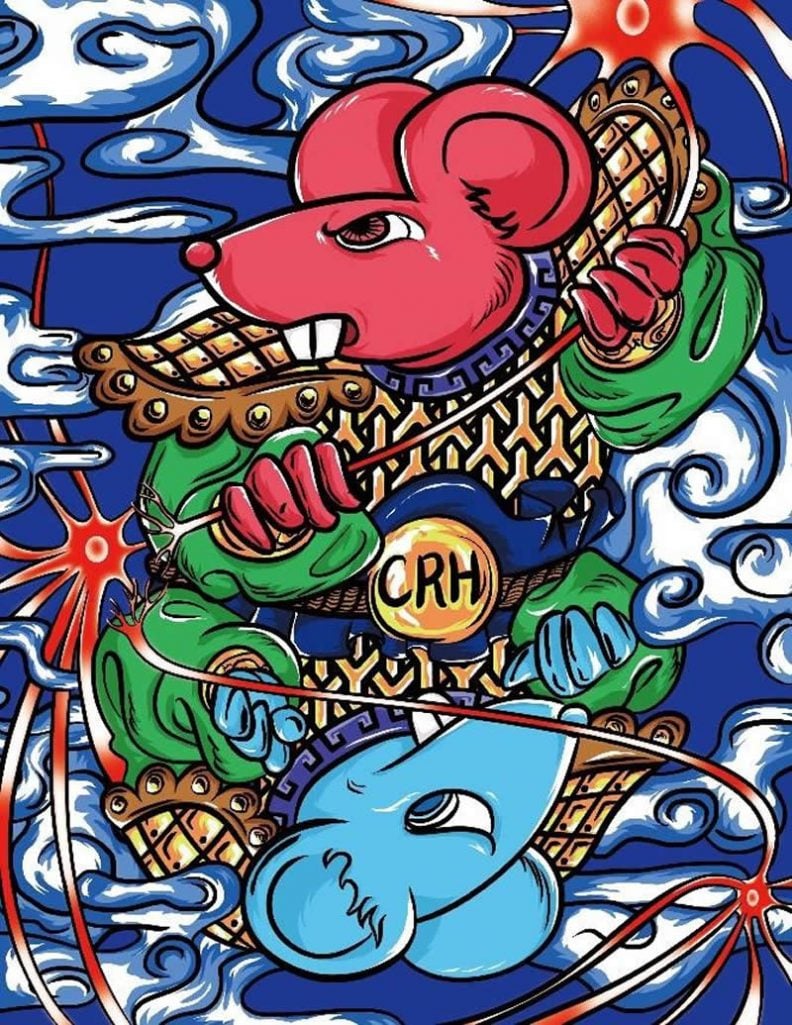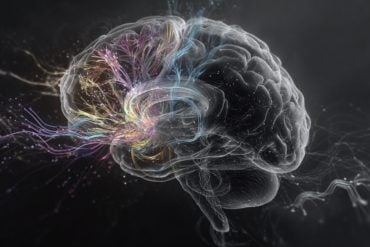Summary: Researchers uncover a key role of medial prefrontal cortex corticotropin-releasing factor interneurons for bidirectionally controlling motivated behavioral styles under stress. The findings could help in the development of new treatments for PTSD.
Source: USTC
In response to stressors, individuals exhibit different coping styles, each characterized by a set of behavioural, physiological, and psychological responses. The active behavioural style refers to efforts to blunt the impact of stressors and is related to resilience to stress, whereas the passive behavioural style refers to efforts to avoid confronting stressors and is associated with vulnerability to psychopathology. This is a well-known scientific question, shortly called the “fight or flight”. However, the biological basis of the brain has not been fully understood.
Recently, the research team led by Prof. ZHOU Jianging from University of Science and Technology of China (USTC) of Chinese Academy of Science (CAS) found that prefrontal corticotropin-releasing factor (CRF) neurons are recruited during behavioural challenges, and manipulation of CRF neurons motivates the selection of behavioural styles under challenges. They also demonstrated that activation of CRF neurons promotes persistent stress-resistant behaviours. The study was published in Neuron.
By using calcium imaging in vivo and cell-specific targeted viral-mediated gain- or loss-of-function tools, such as pharmacogenetic designer receptors exclusively activated by designer drugs (DREADD) approaches, the researchers investigated how mPFC CRF neurons regulate behavioural style selection during various stress in CRF transgenic mice.
The results showed that genetic ablation or chemogenetic inhibition of dorsal mPFC (dmPFC) CRF neurons increased immobility under the tail-suspension and forced-swimming challenges and induced social avoidance behaviour, whereas activation had the opposite effect on the same measures.

Furthermore, they found that increasing CRF neuronal activity promoted durable resilience to repeated social defeat stress.
These results uncover a critical role of mPFC CRF interneurons in bidirectionally controlling motivated behavioural style selection under stress. This study may point to novel therapeutic targets such as neural circuit modulation for treatment of major depression and post-traumatic stress disorder.
Source:
USTC
Media Contacts:
Jane FAN Qiong – USTC
Image Source:
The image is credited to WANG Jing, CHEN Xiaodong and XU Qizhi.
Original Research: Closed access
“Prefrontal Cortex Corticotropin-Releasing Factor Neurons Control Behavioral Style Selection under Challenging Situations”. ZHOU Jianging et al.
Frontiers in Behavioral Neuroscience doi:10.1016/j.neuron.2020.01.033.
Abstract
Prefrontal Cortex Corticotropin-Releasing Factor Neurons Control Behavioral Style Selection under Challenging Situations
Highlights
• Prefrontal CRF GABAergic interneurons are recruited during behavioral challenges
• Manipulation of CRF neurons motivates selection of behavioral styles under challenges
• Activation of CRF neurons promotes persistent stress-resistant behaviors
Summary
In response to stressors, individuals adopt different behavioral styles, which are essential for survival and form the basis of differential susceptibility to stress-related disorders. Corticotropin-releasing factor (CRF) and the medial prefrontal cortex (mPFC) have predominantly been studied in behavioral response to stress, while the role of mPFC CRF neurons is poorly understood. Using morphology, electrophysiology, and calcium imaging approaches, we characterized mPFC CRF neurons as a unique subtype of GABAergic inhibitory interneurons that were directly engaged in the tail suspension challenge. Genetic ablation or chemogenetic inhibition of dorsal mPFC (dmPFC) CRF neurons increased immobility under the tail-suspension and forced-swimming challenges and induced social avoidance behavior, whereas activation had the opposite effect on the same measures. Furthermore, increasing CRF neuronal activity promoted durable resilience to repeated social defeat stress. These results uncover a critical role of mPFC CRF interneurons in bidirectionally controlling motivated behavioral style selection under stress.






